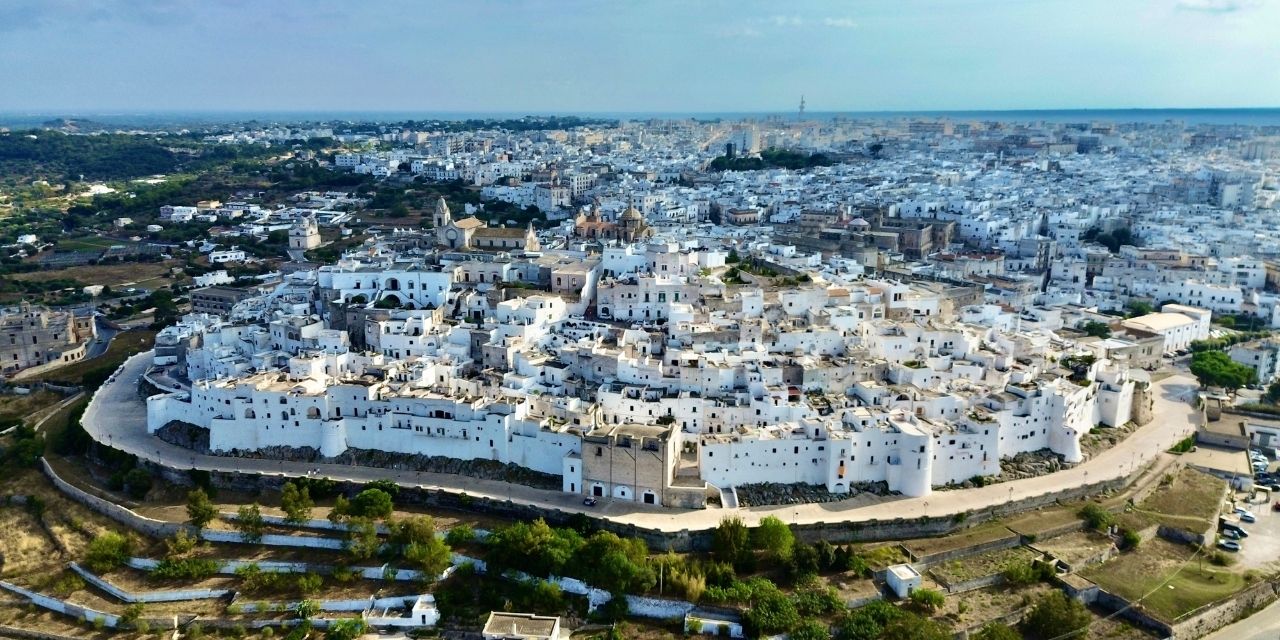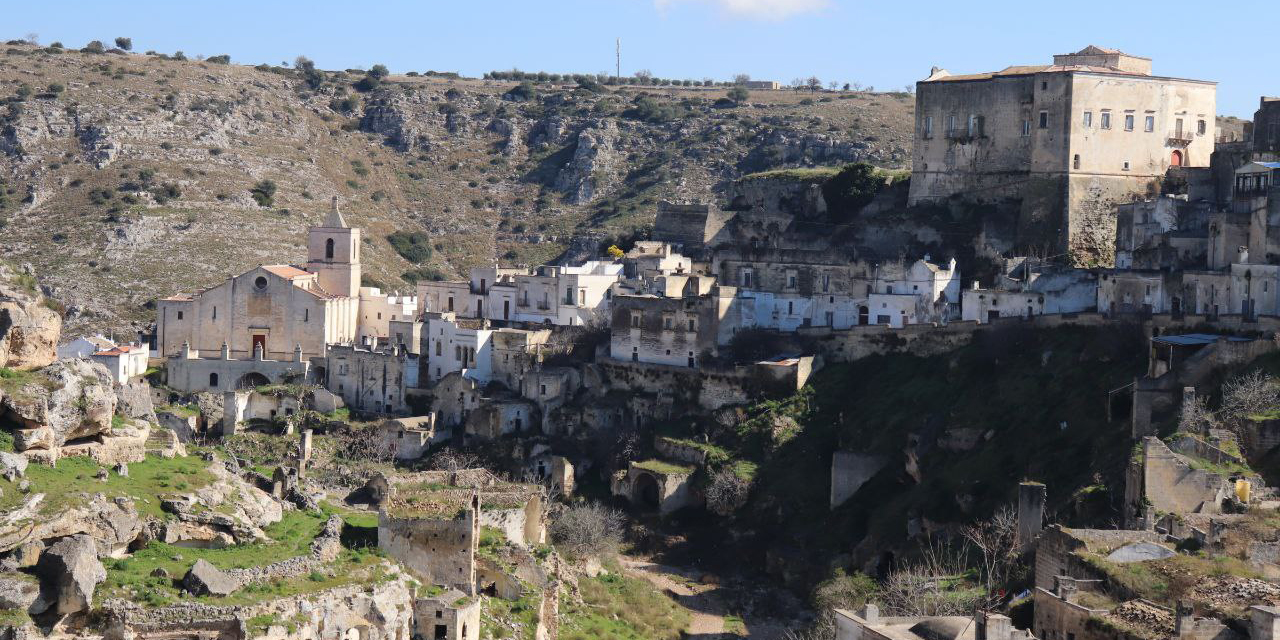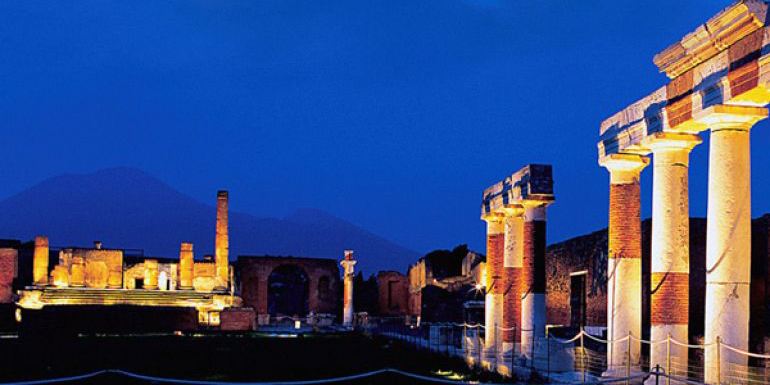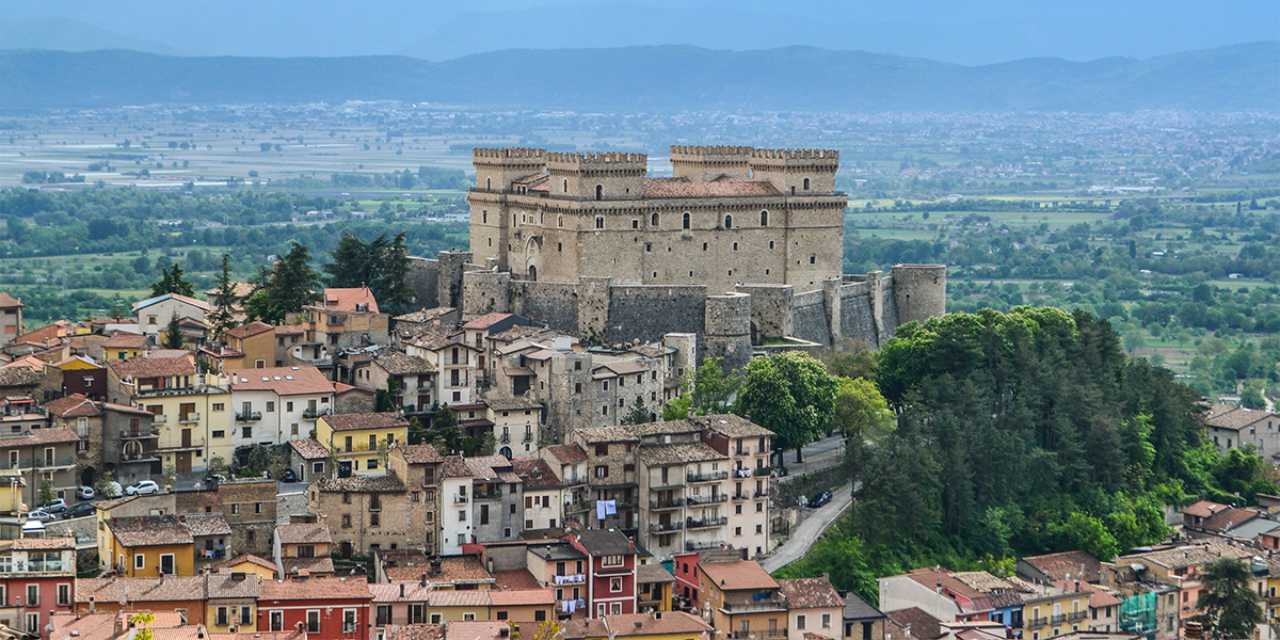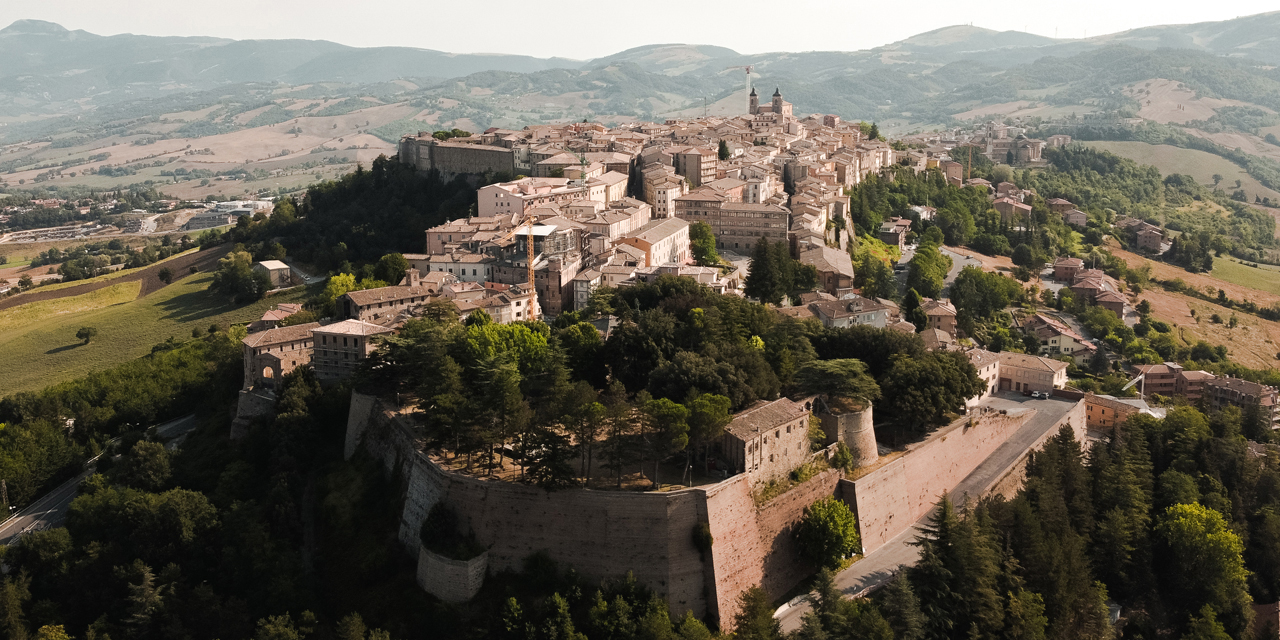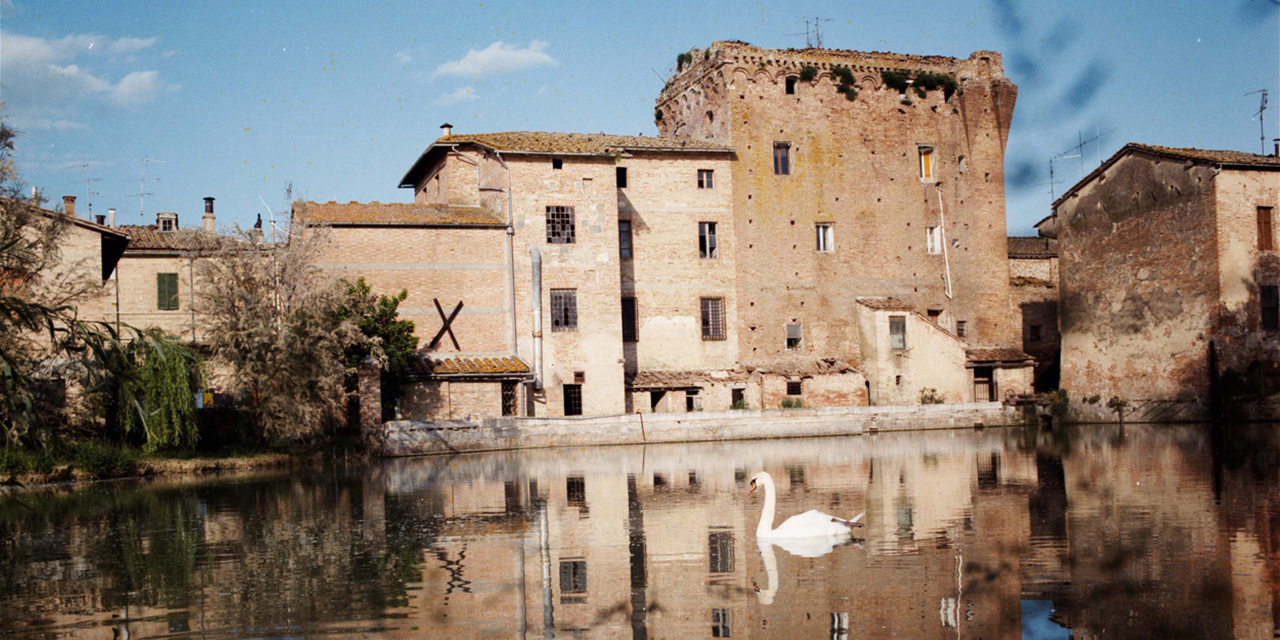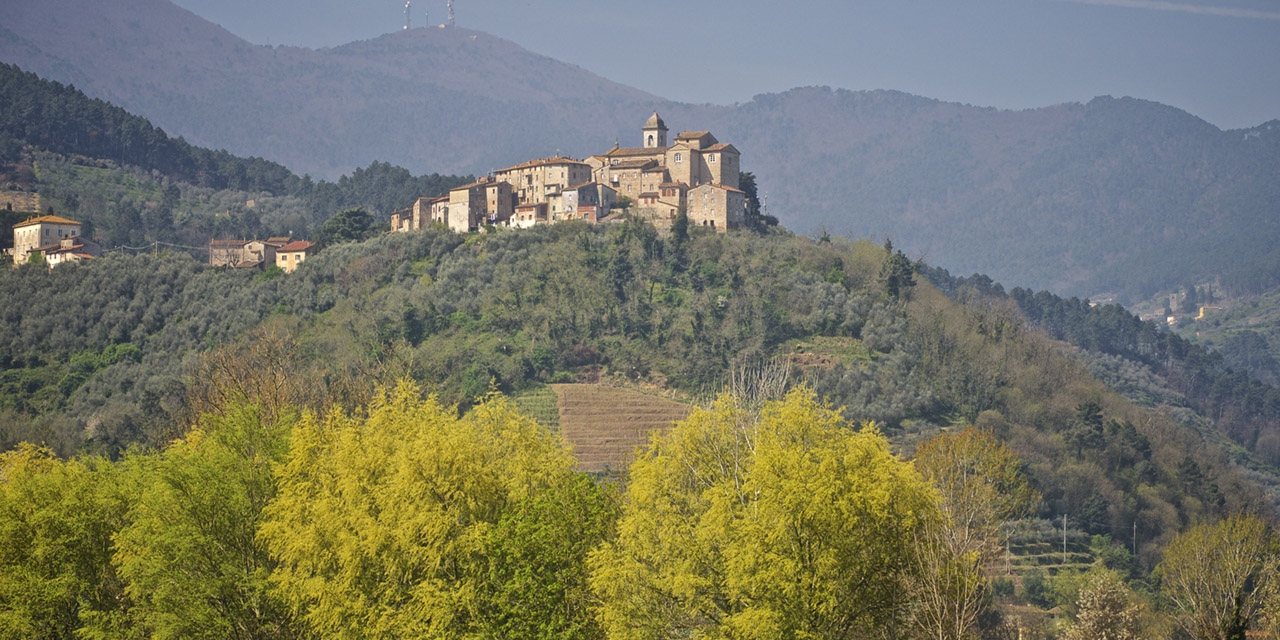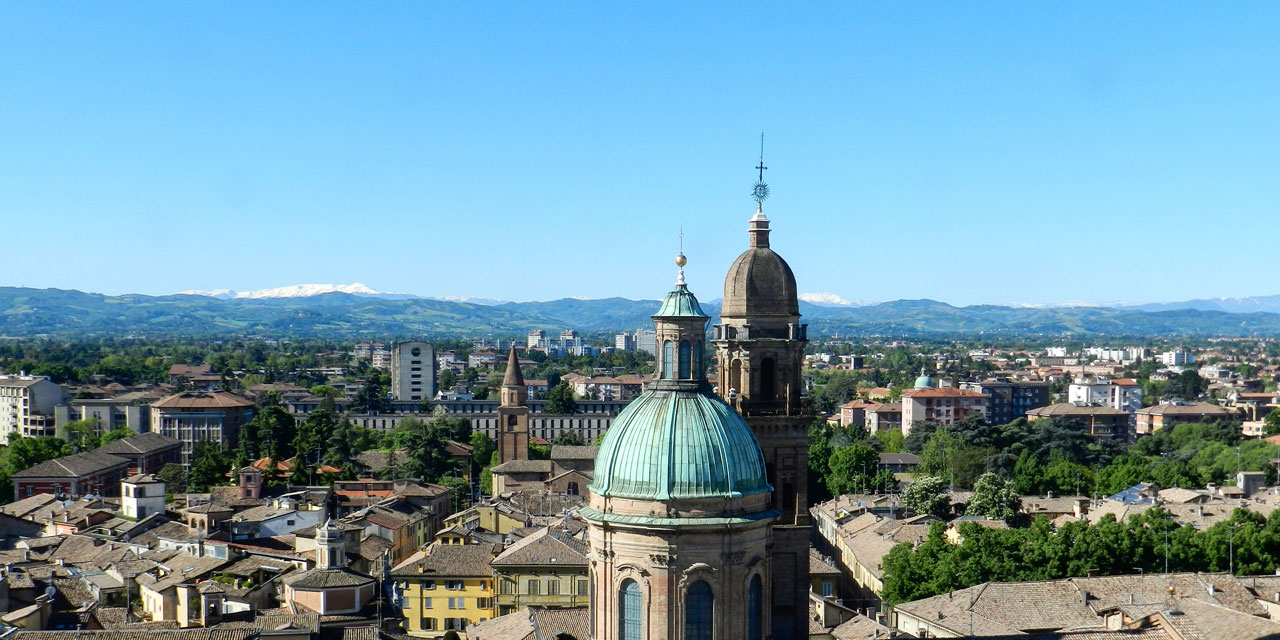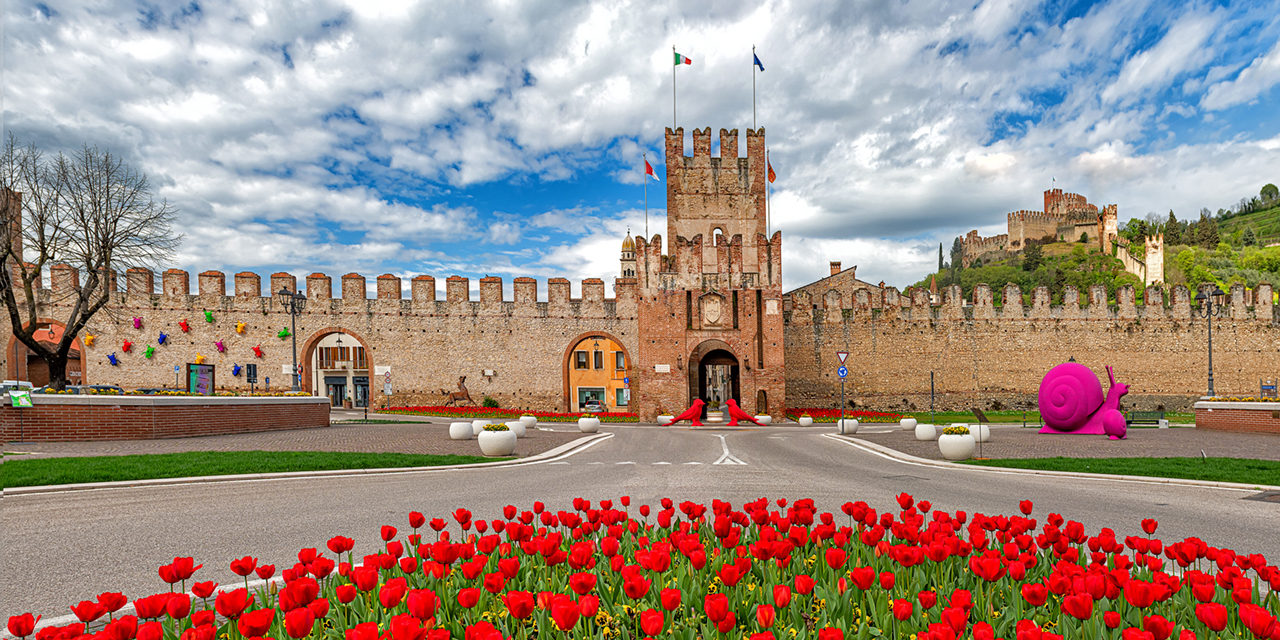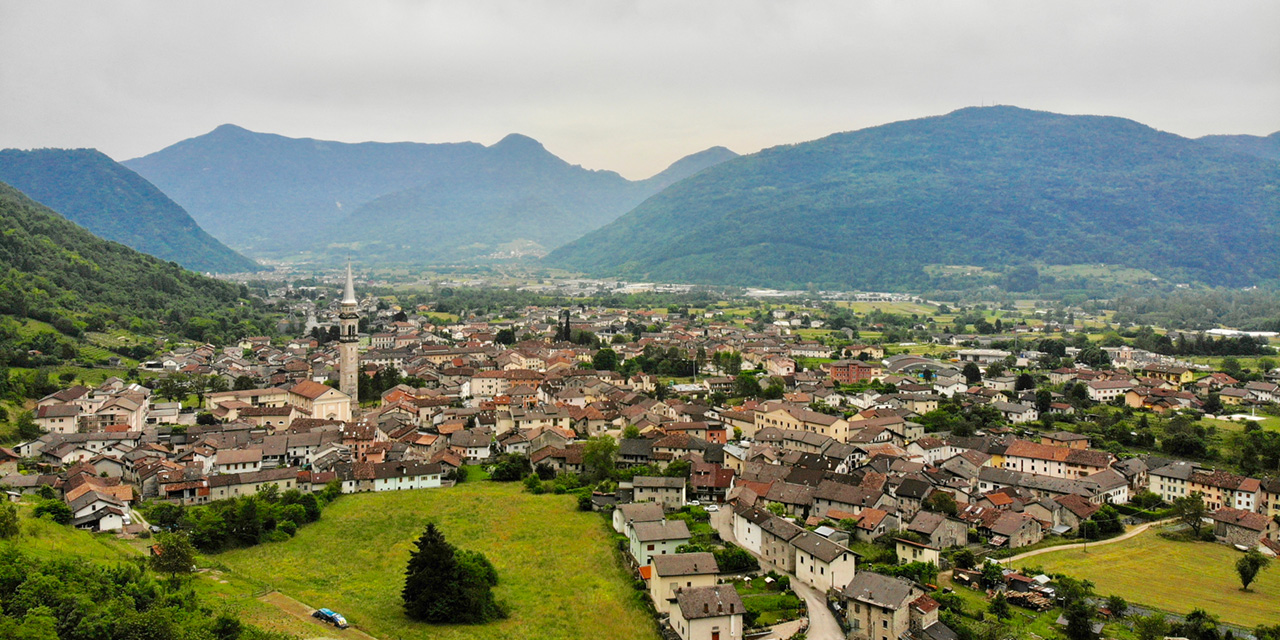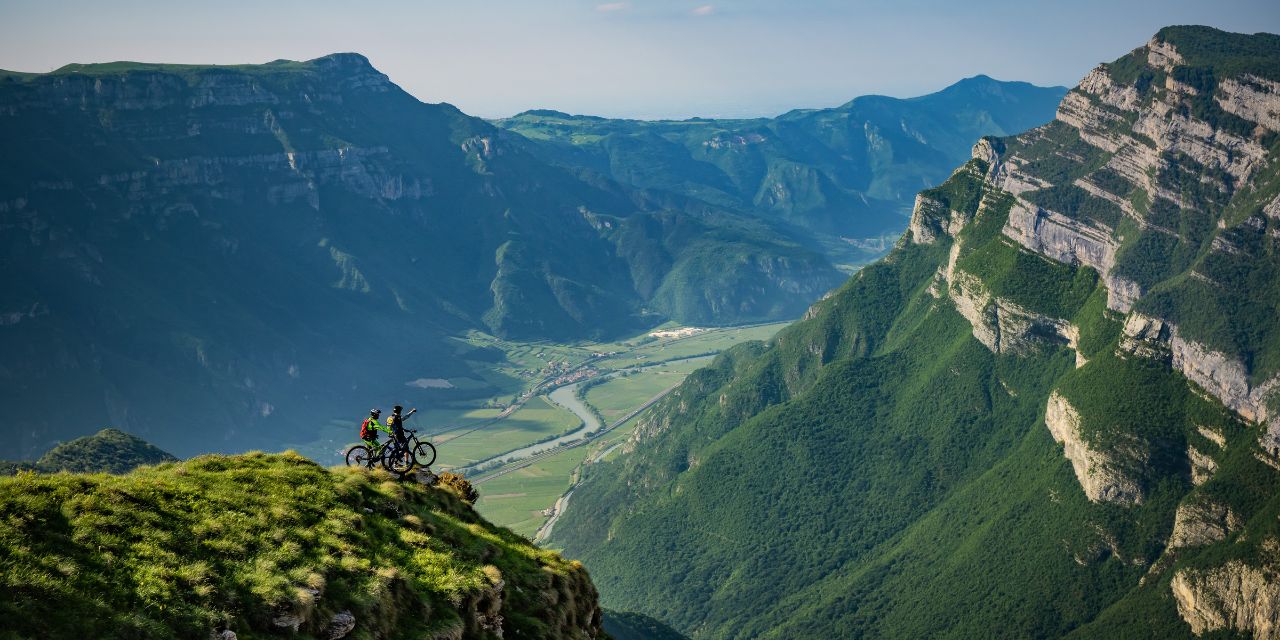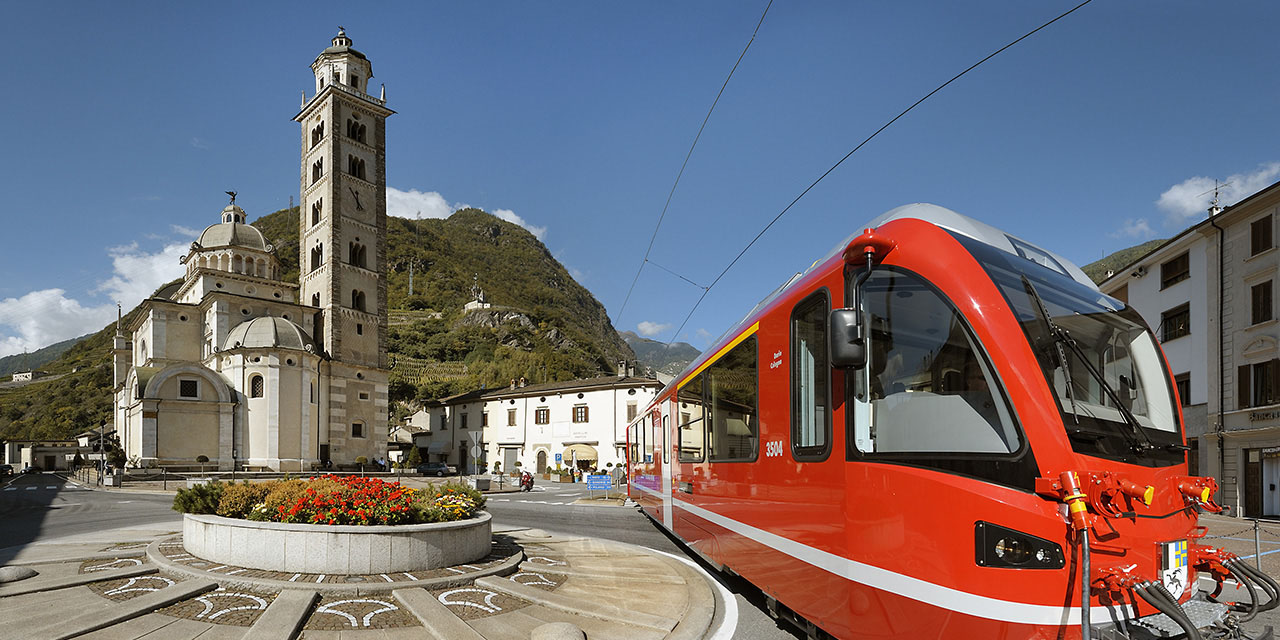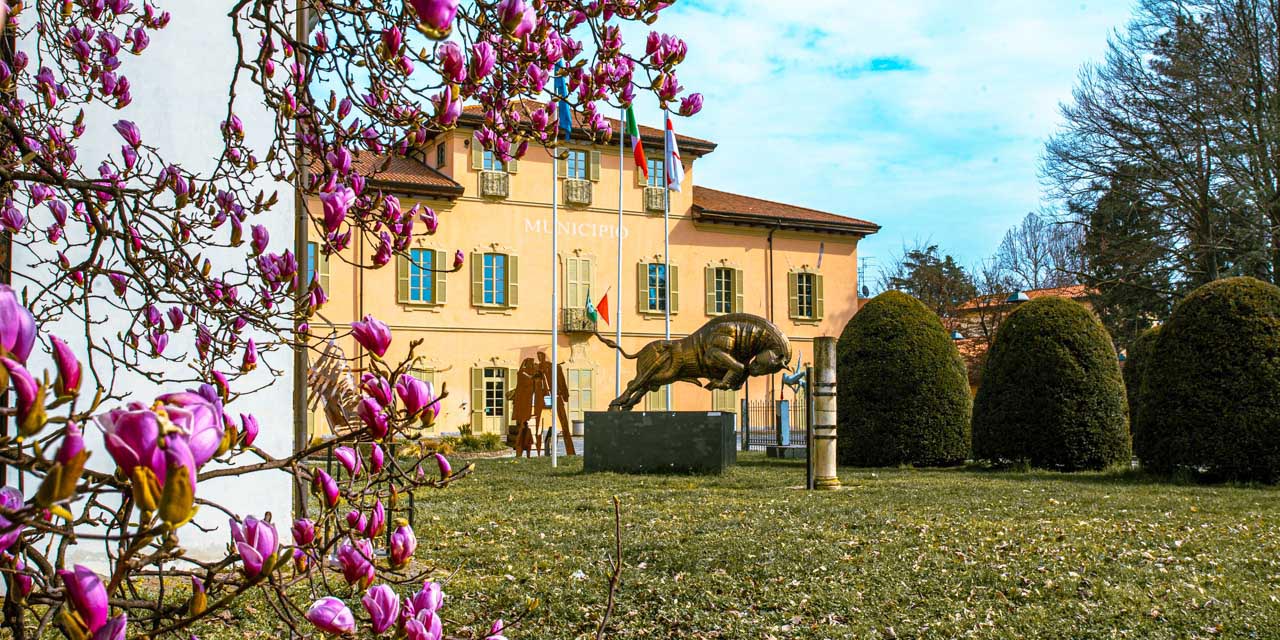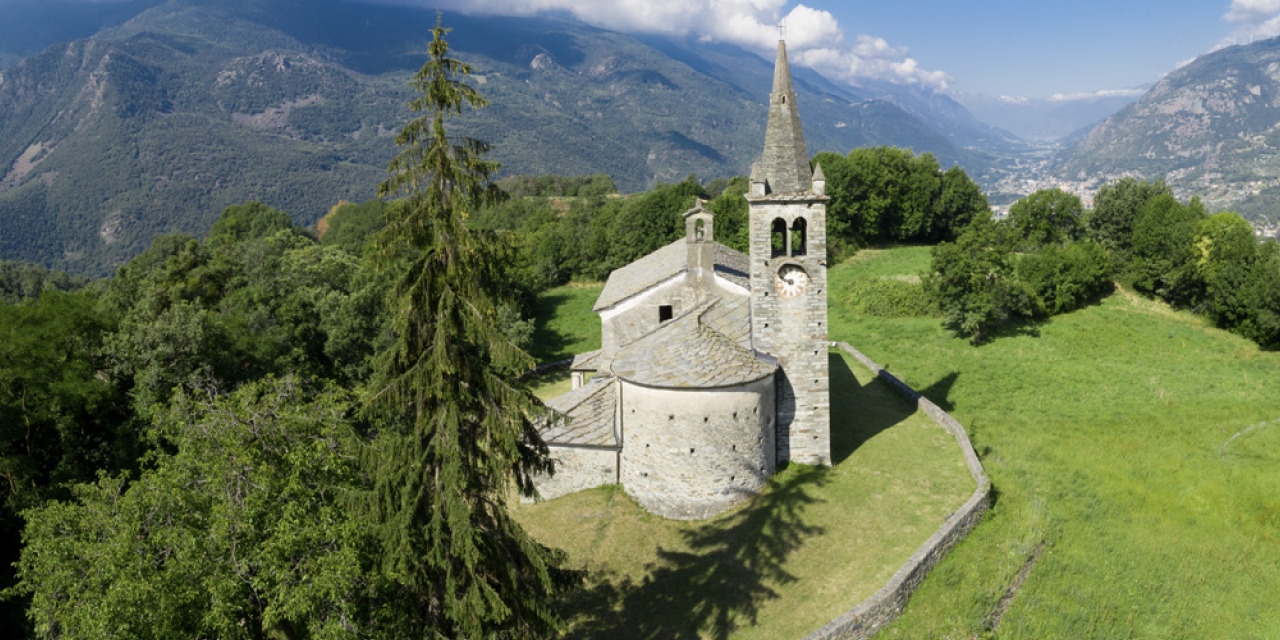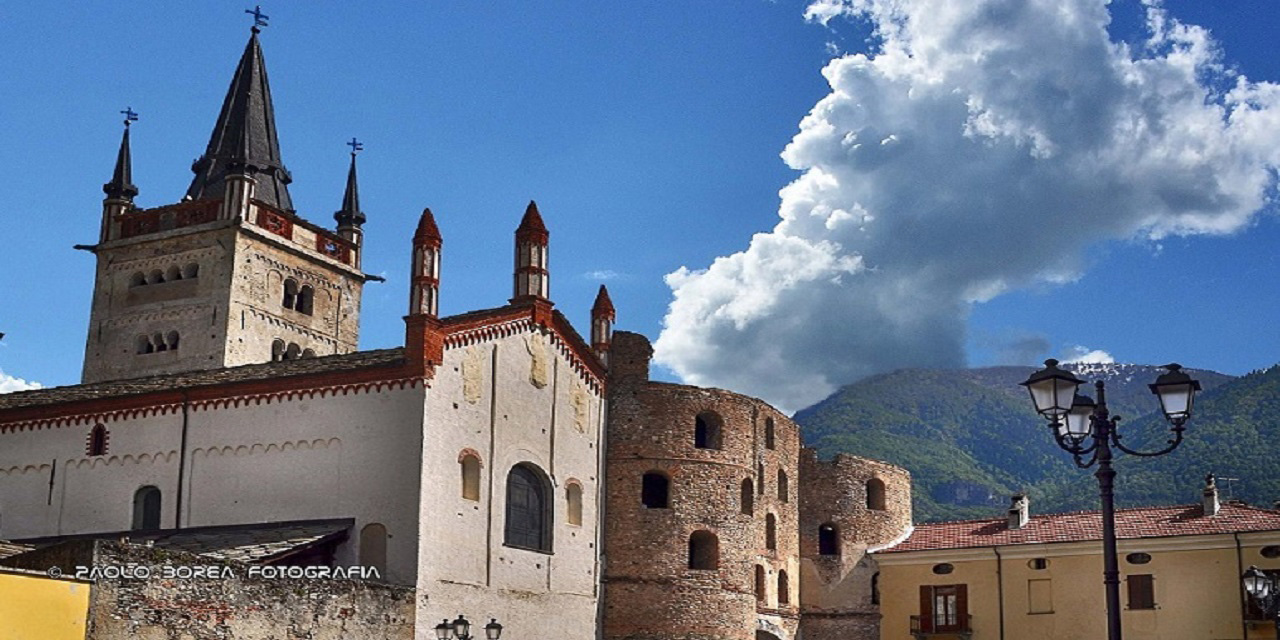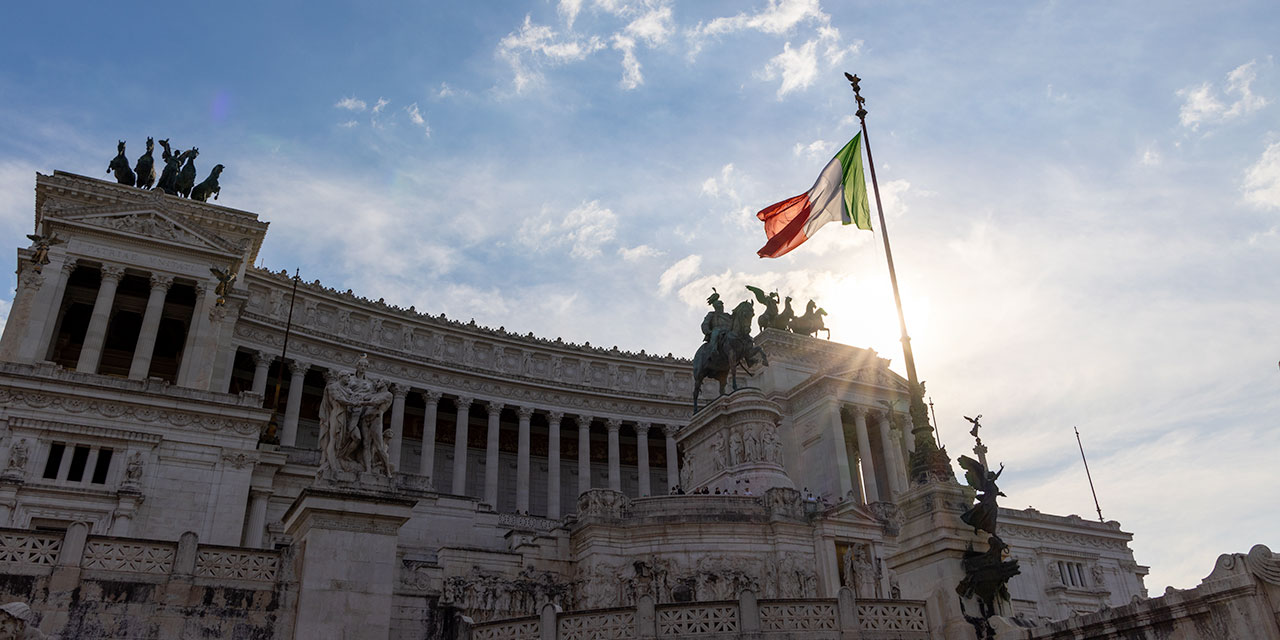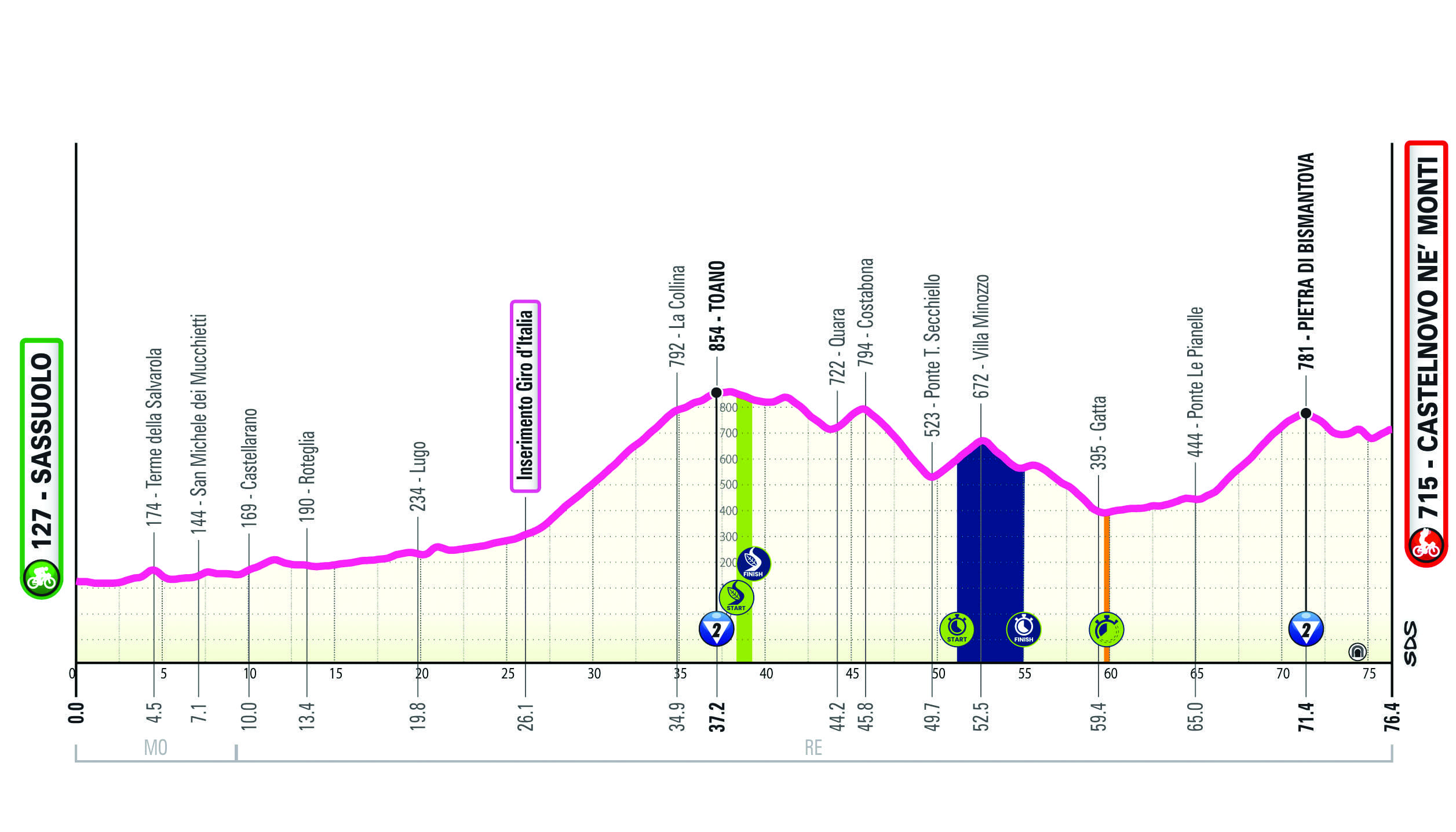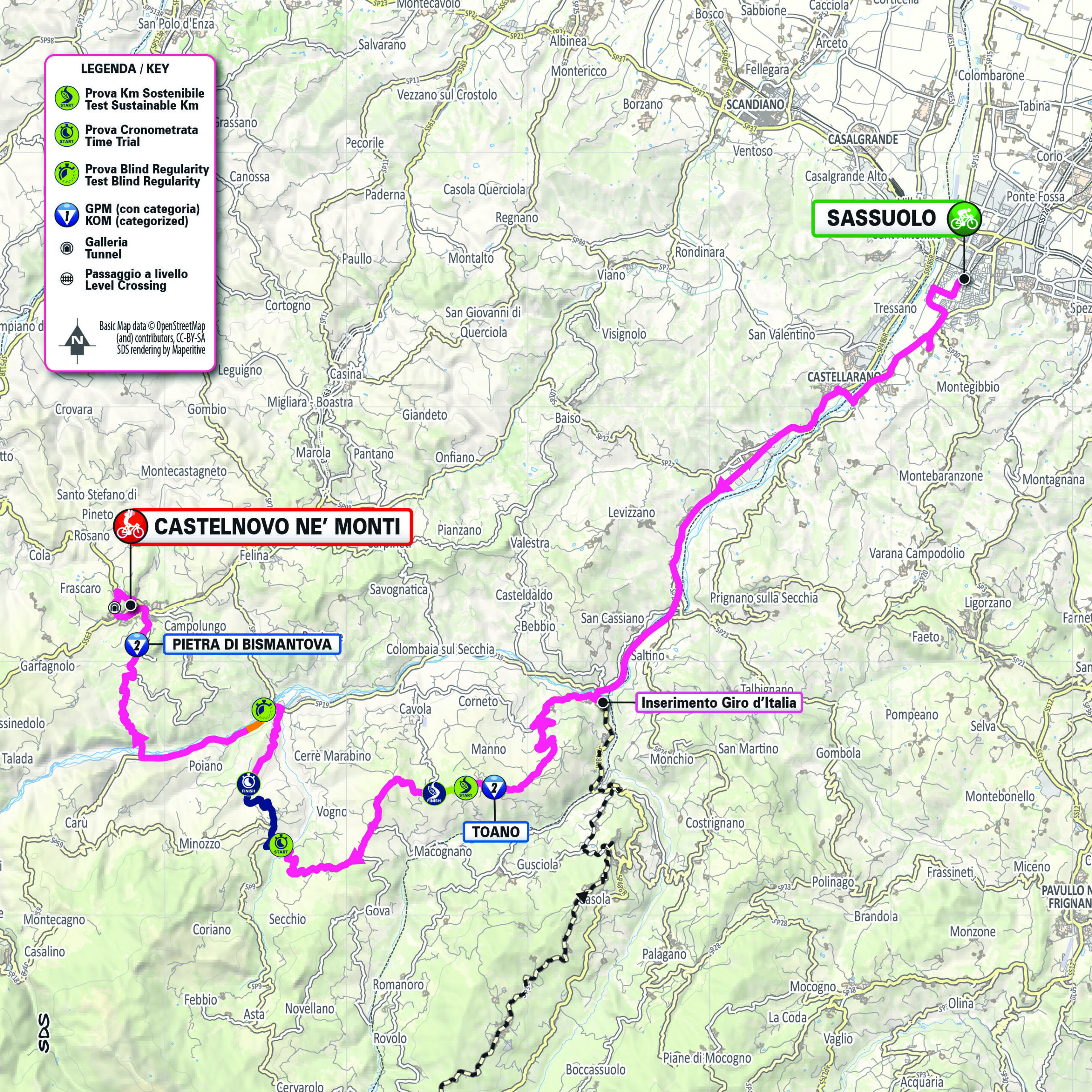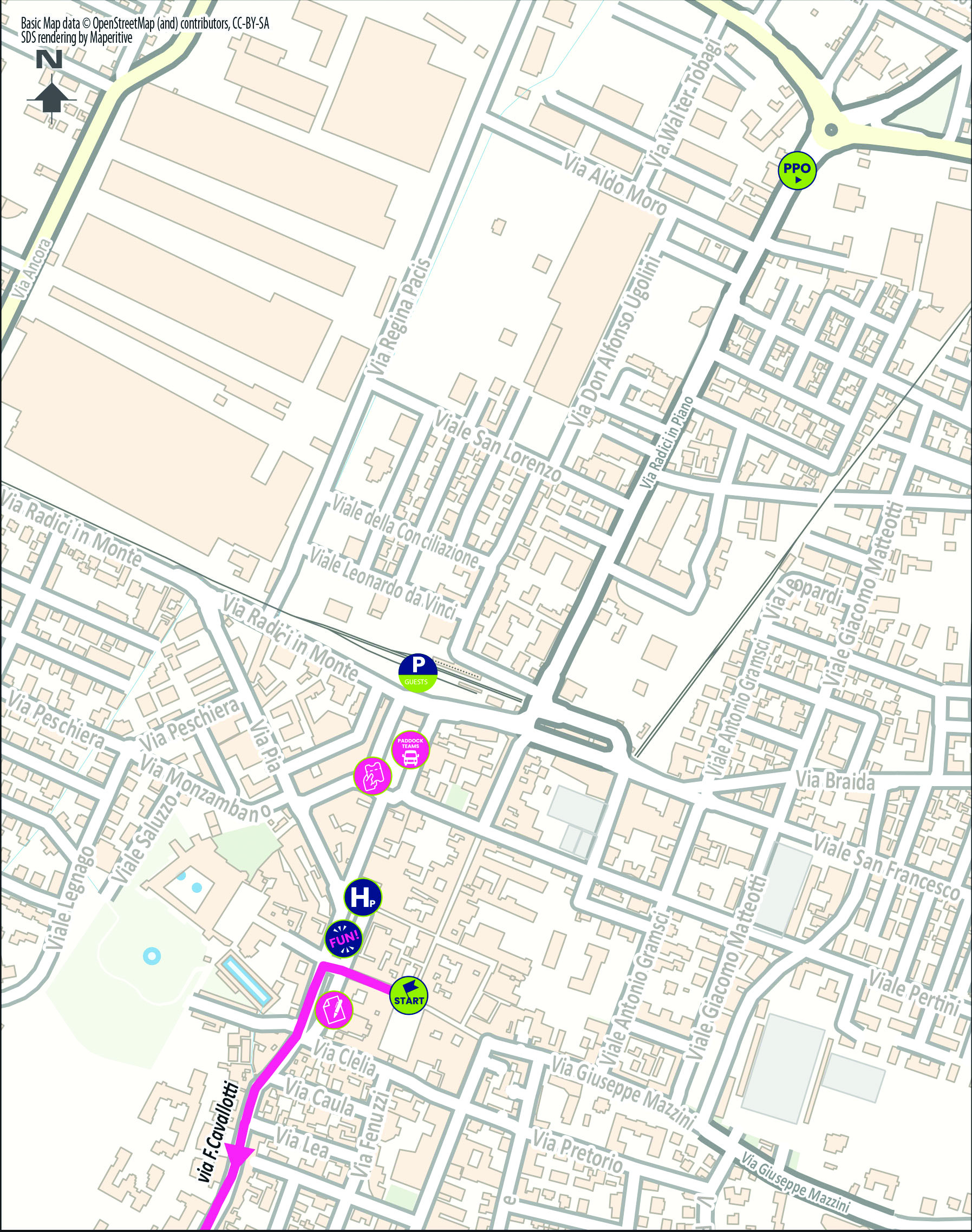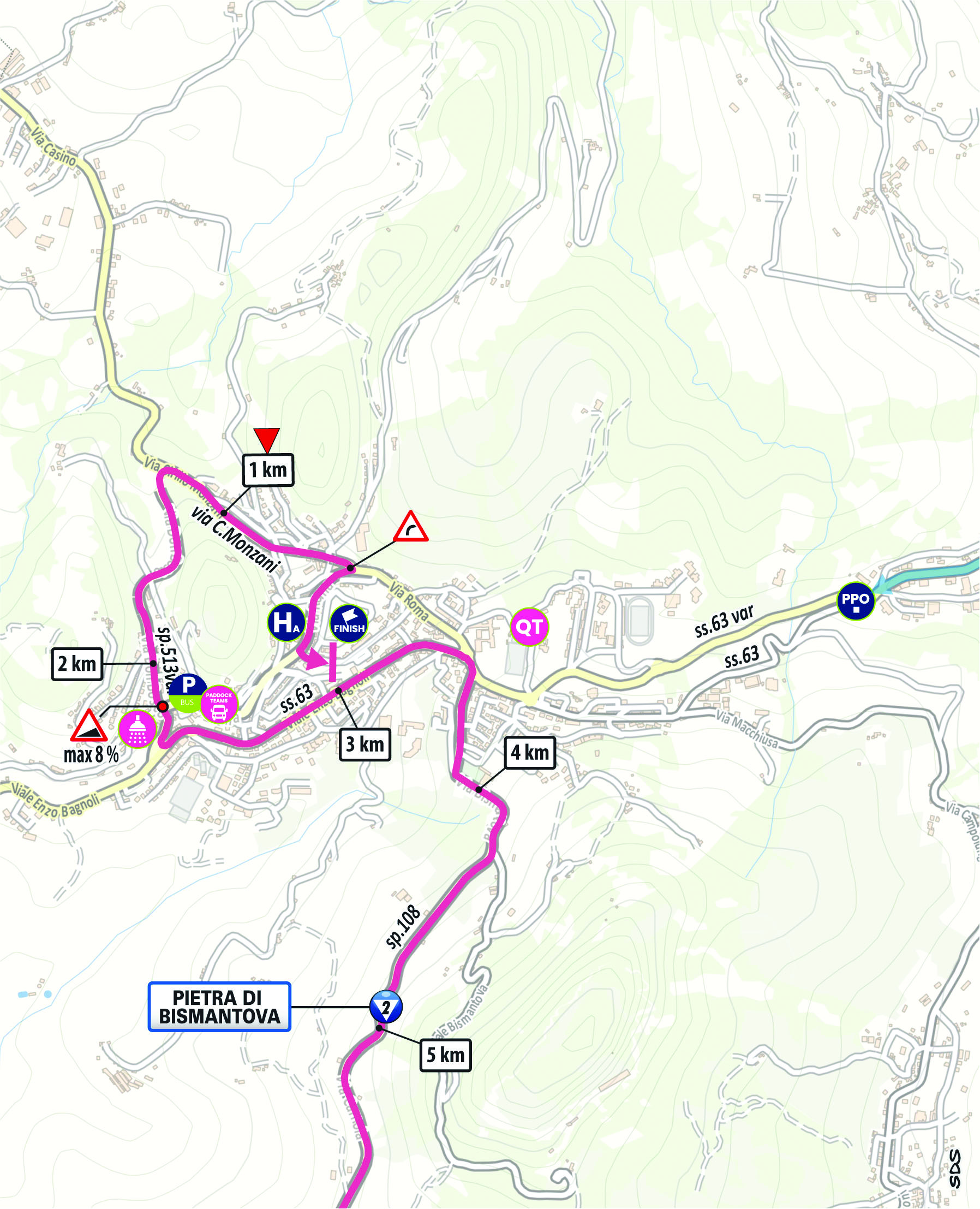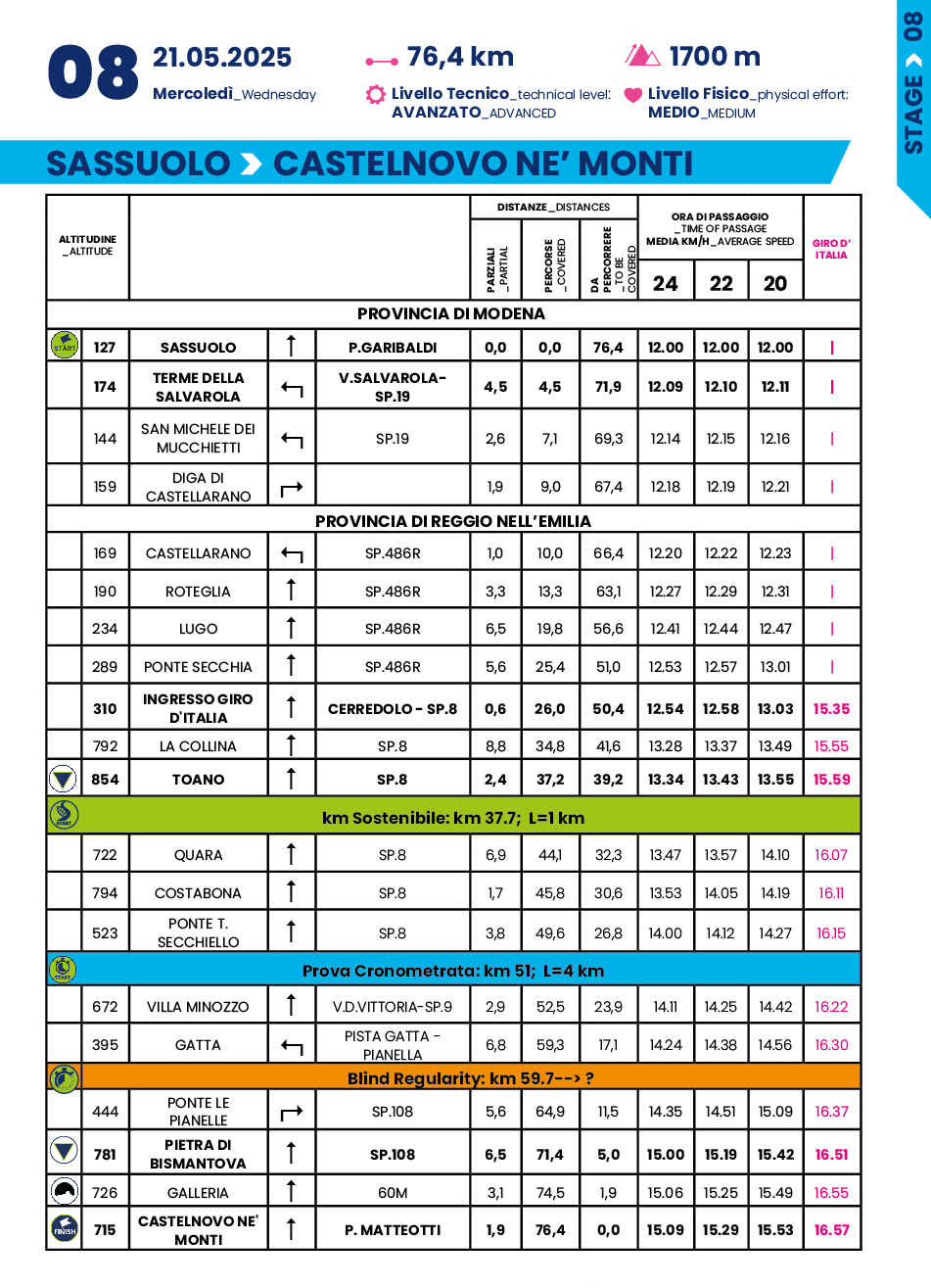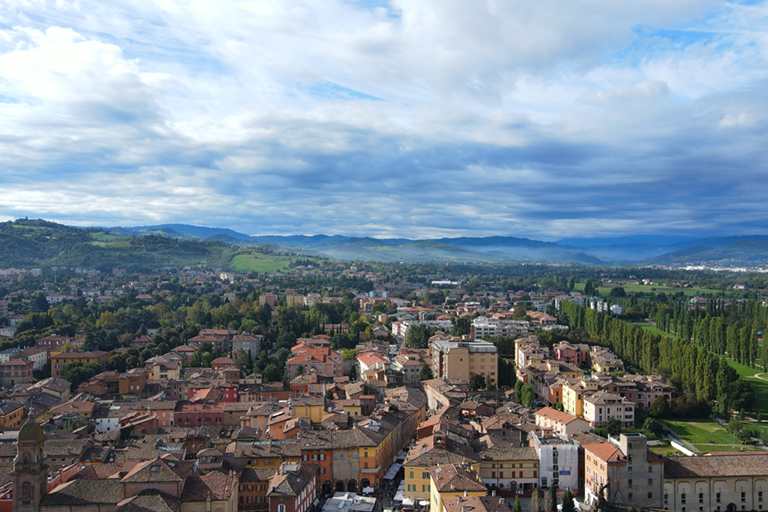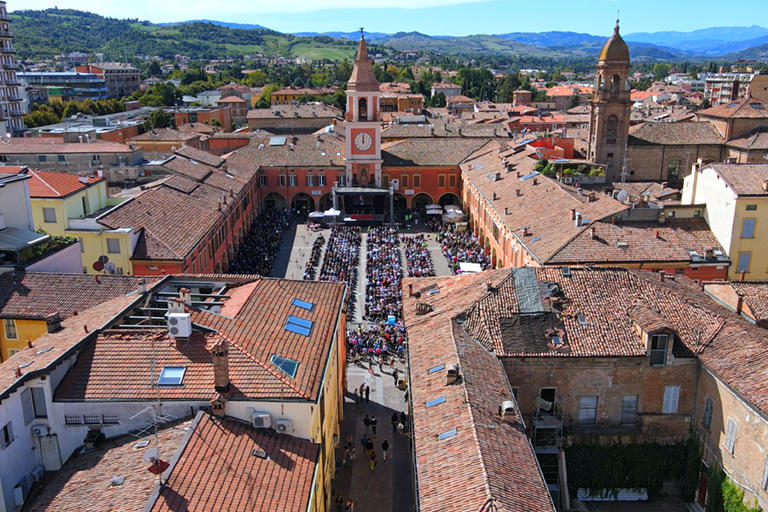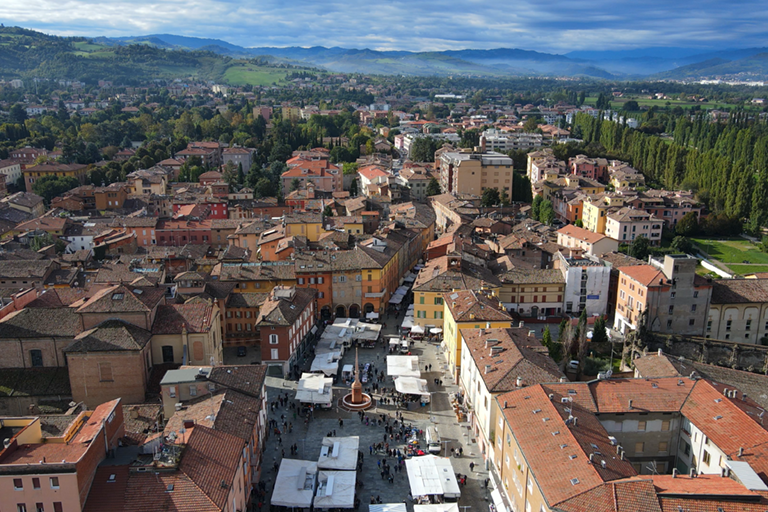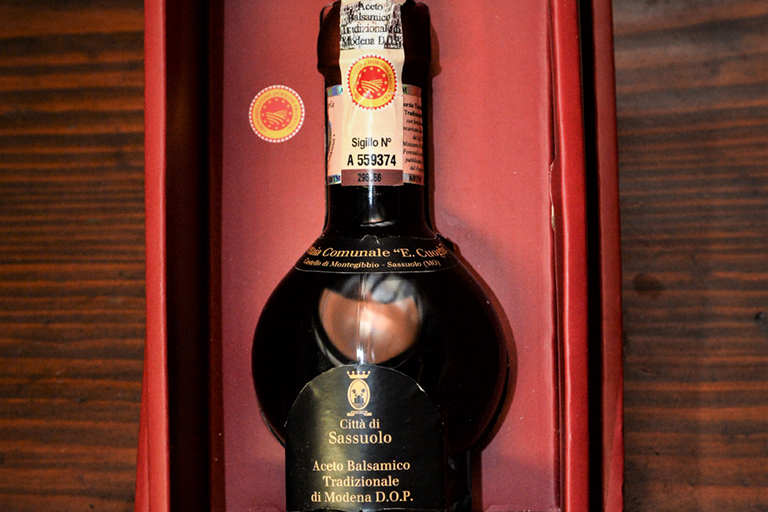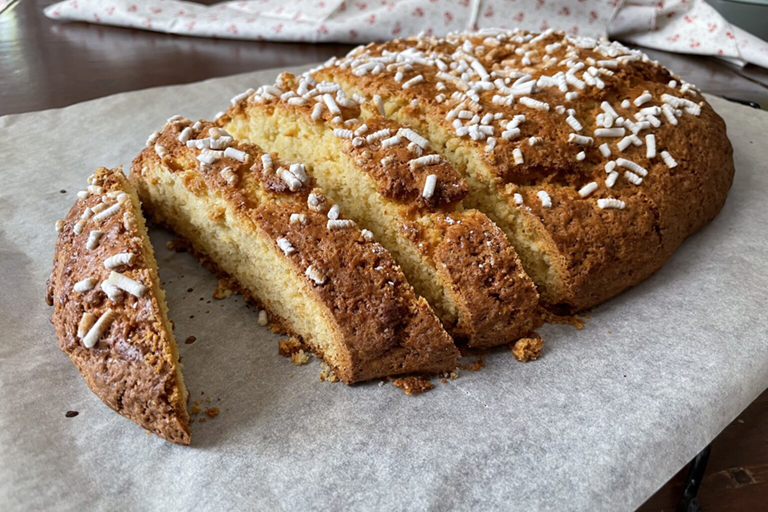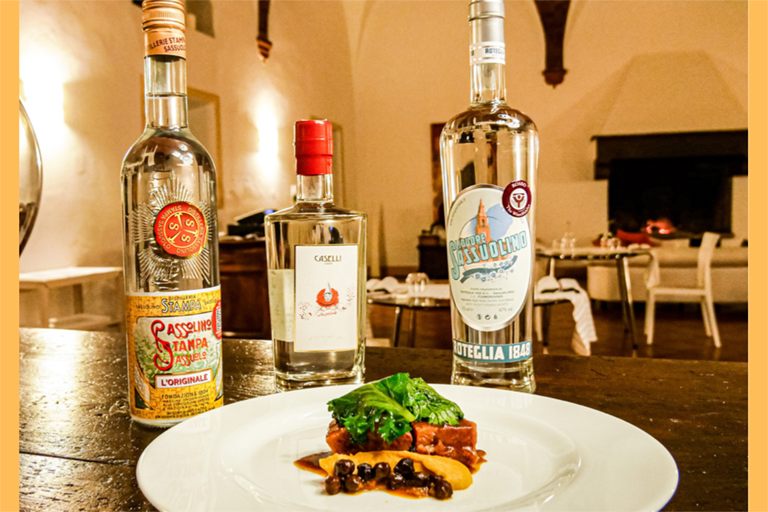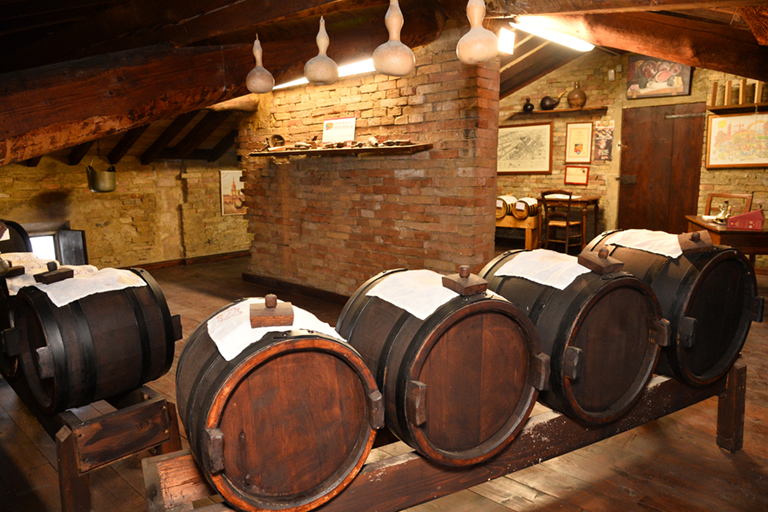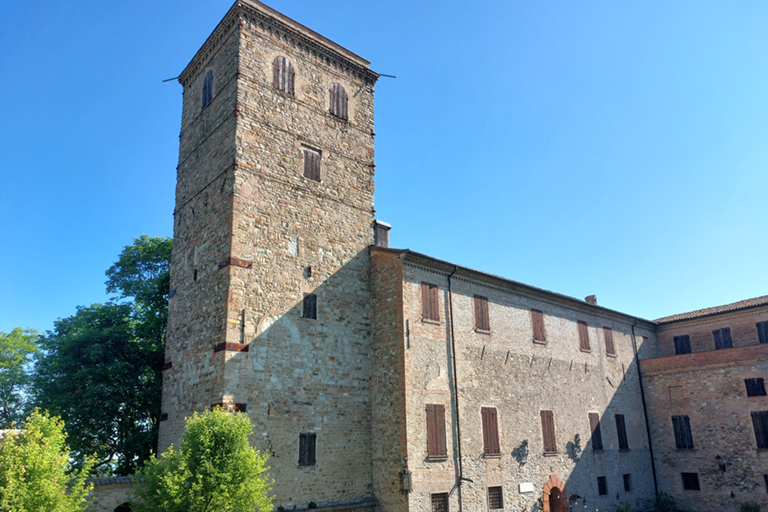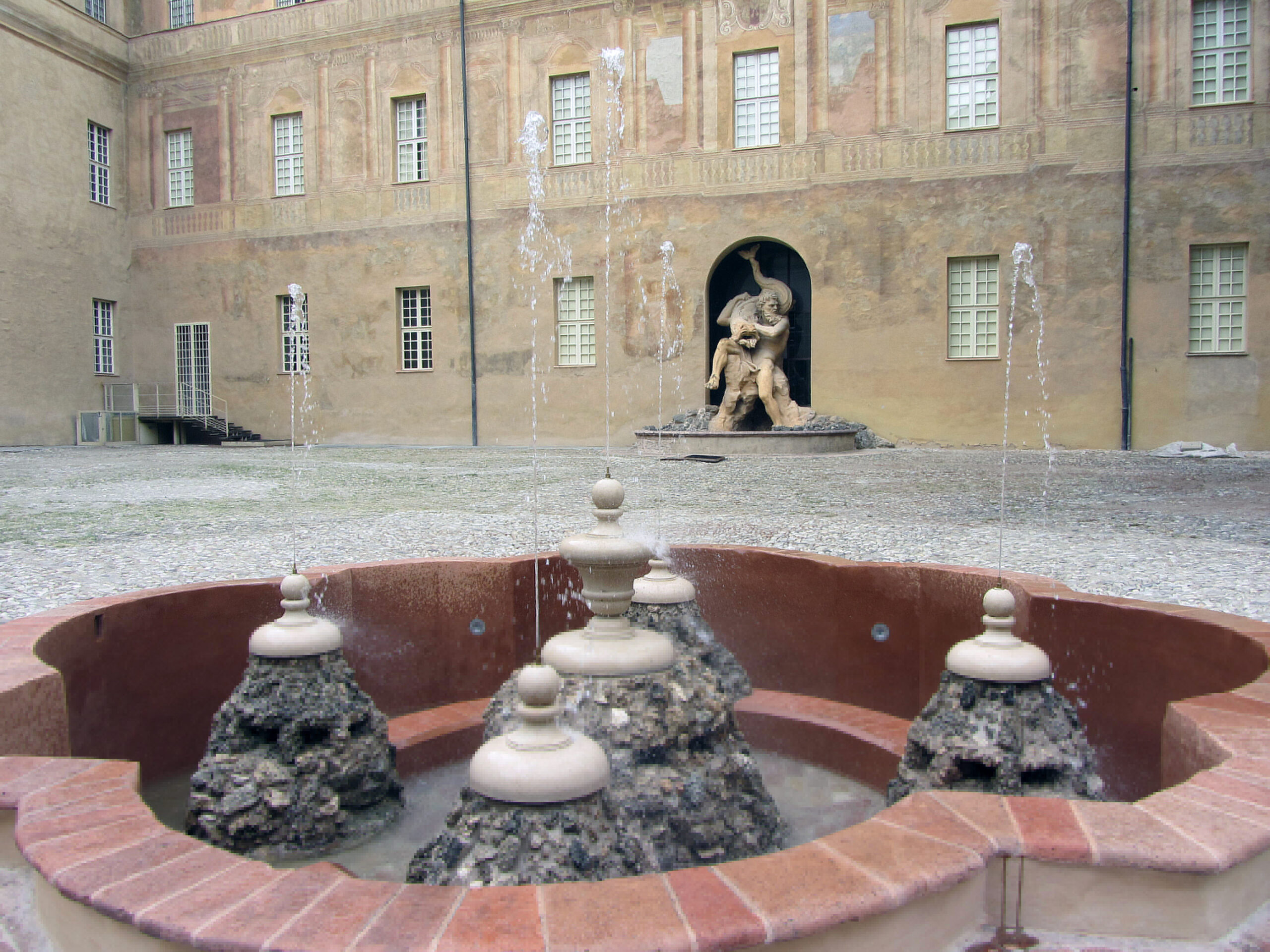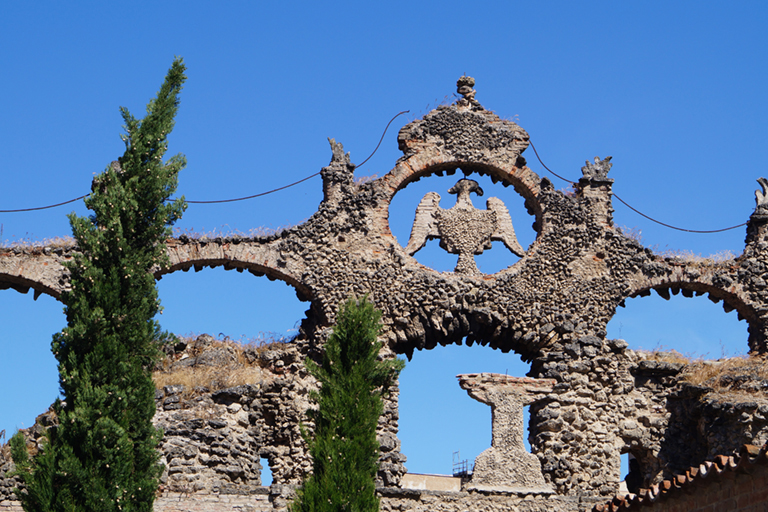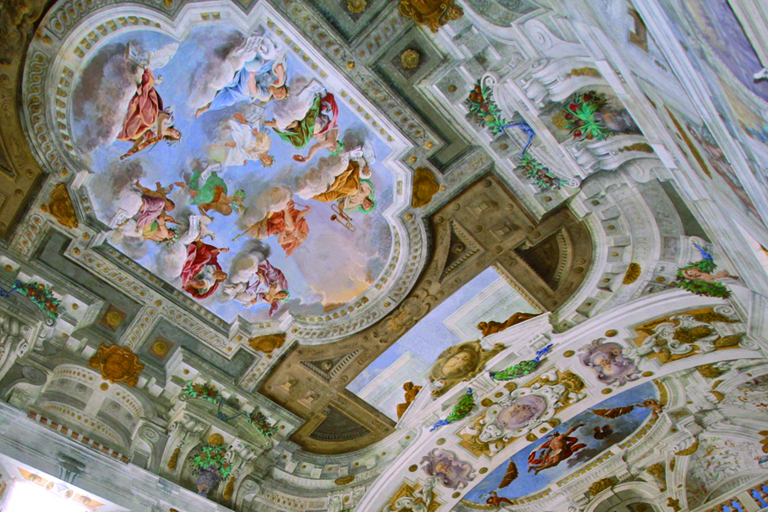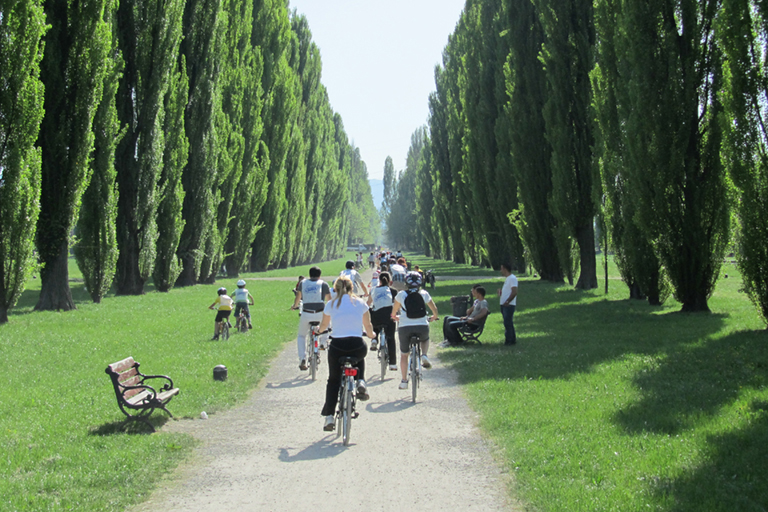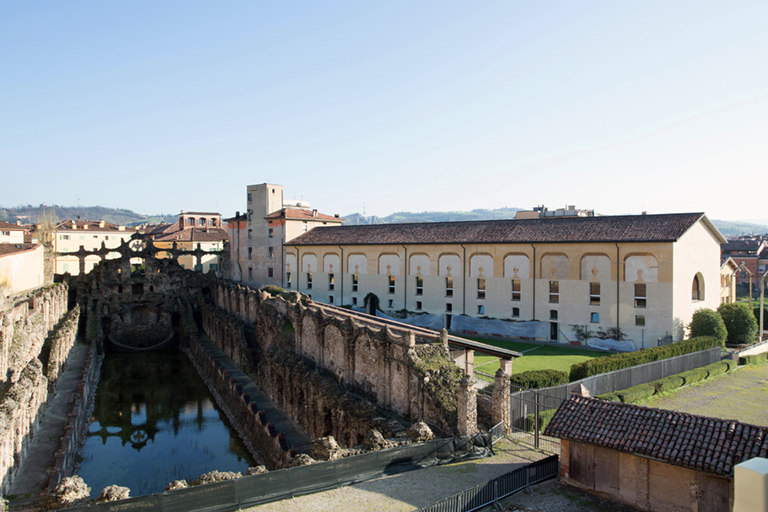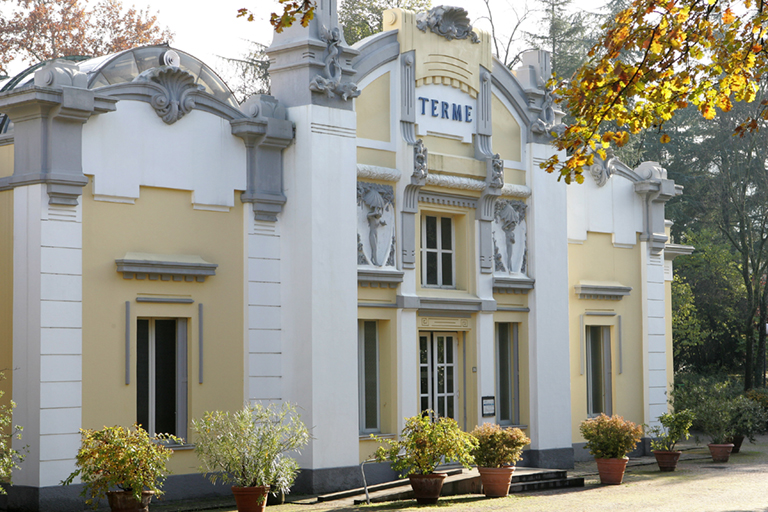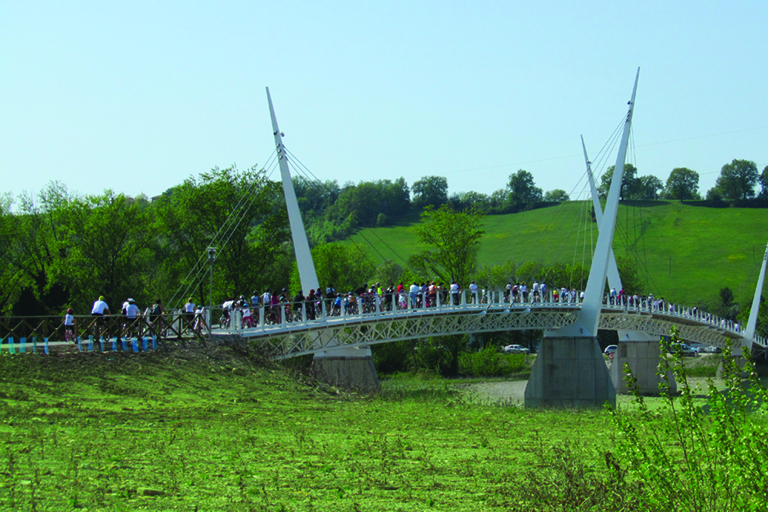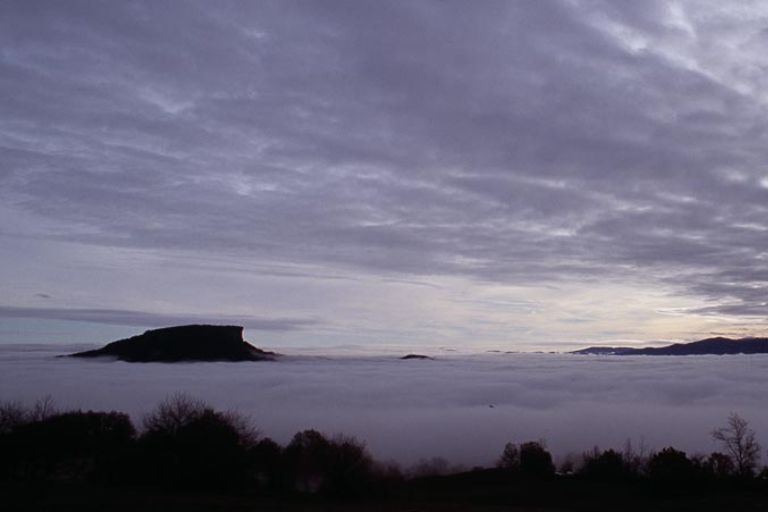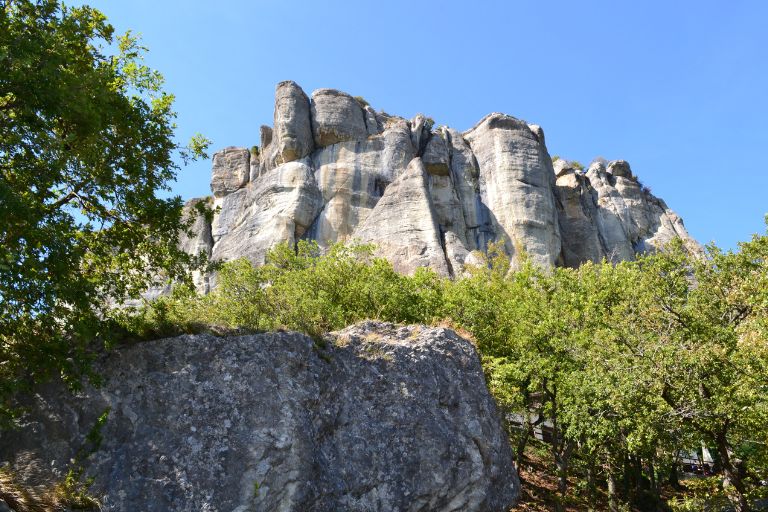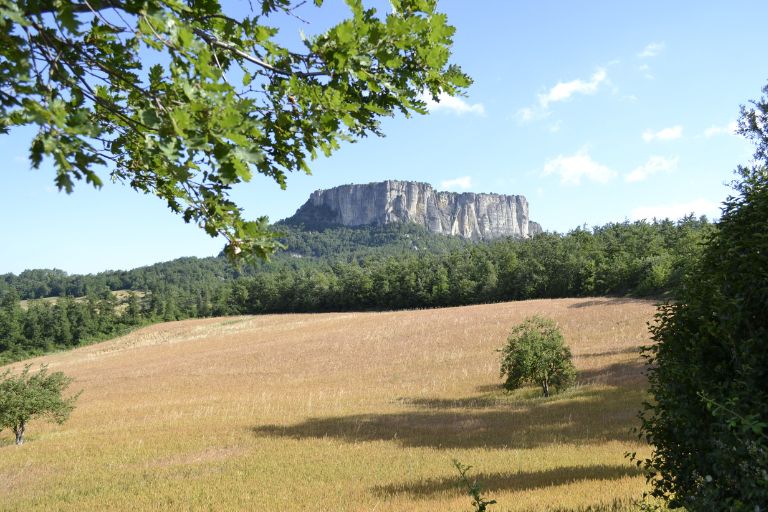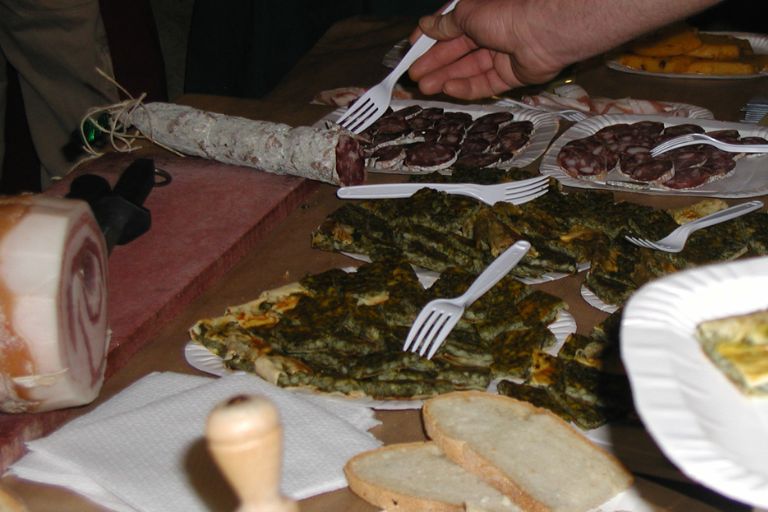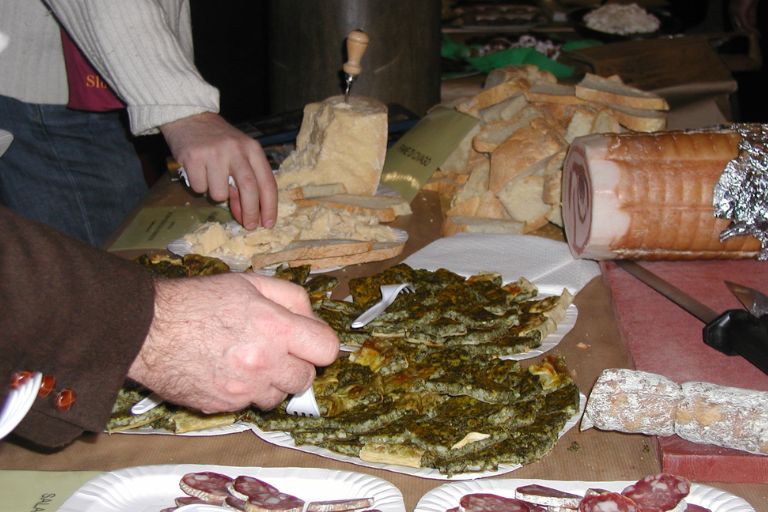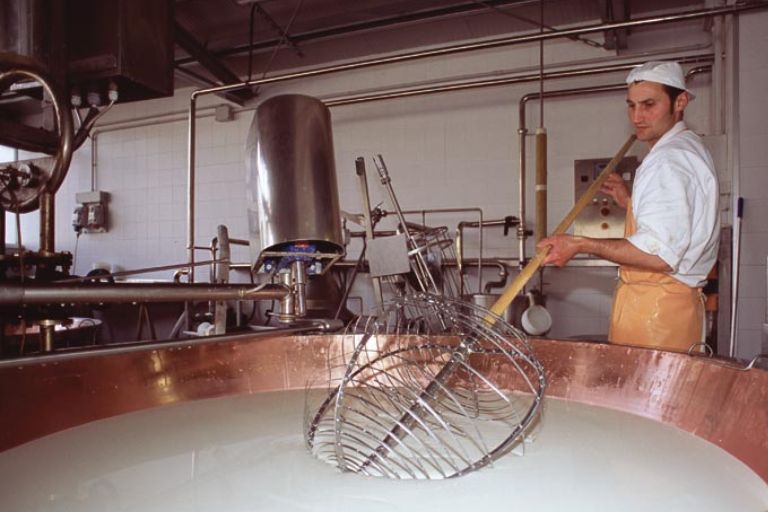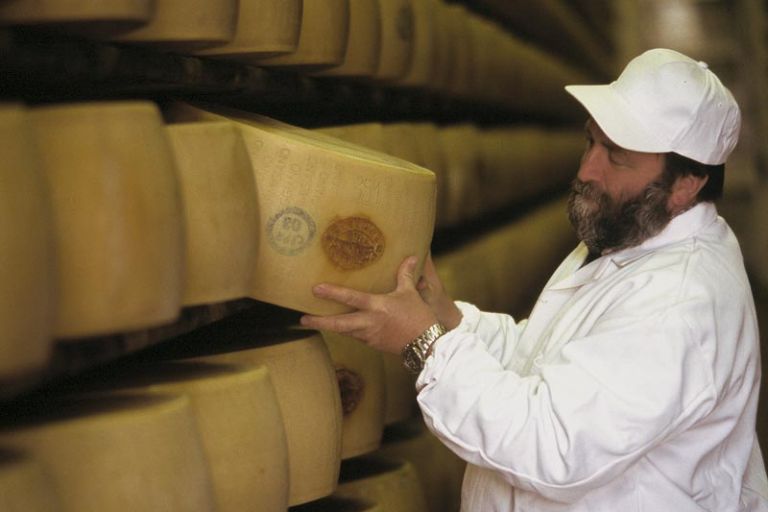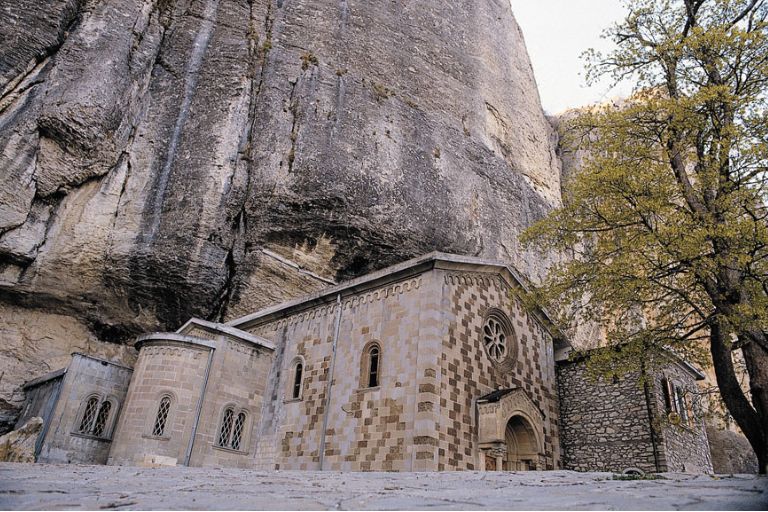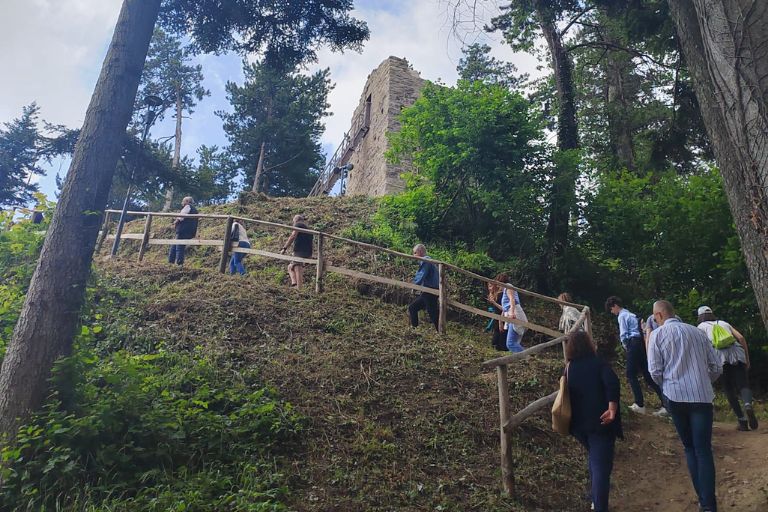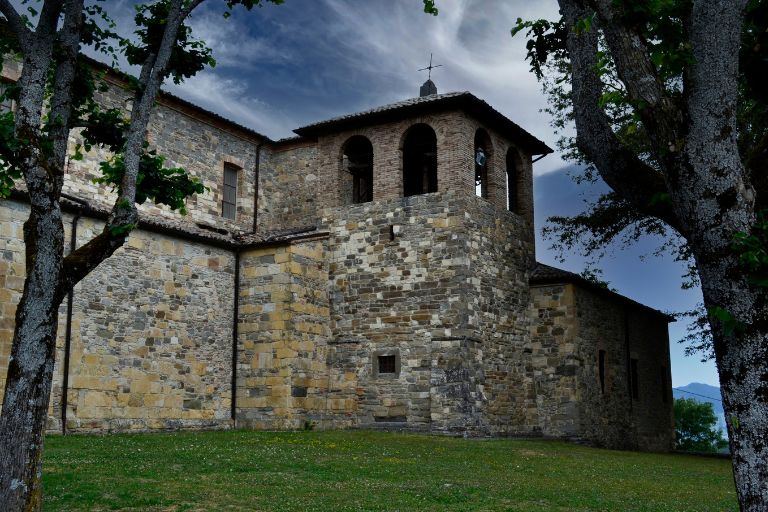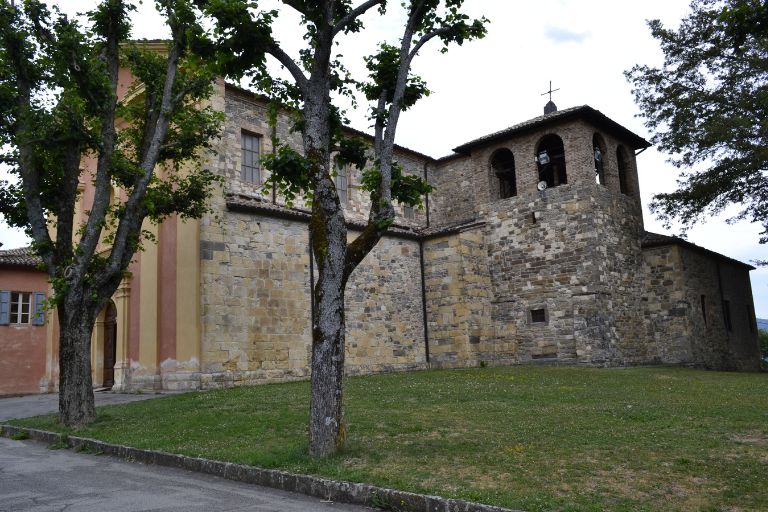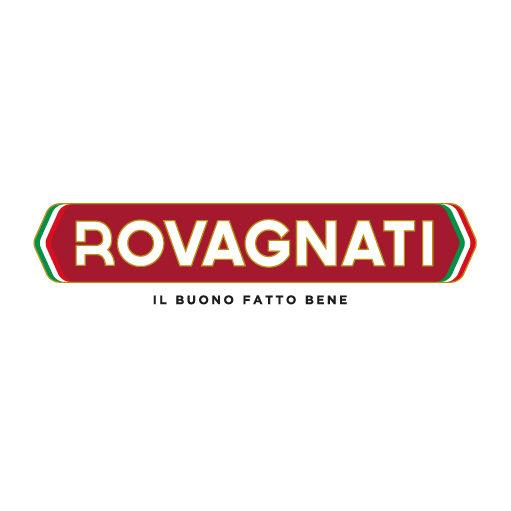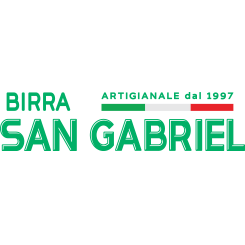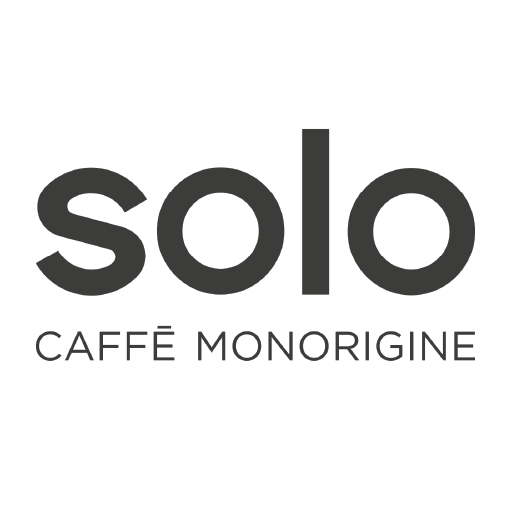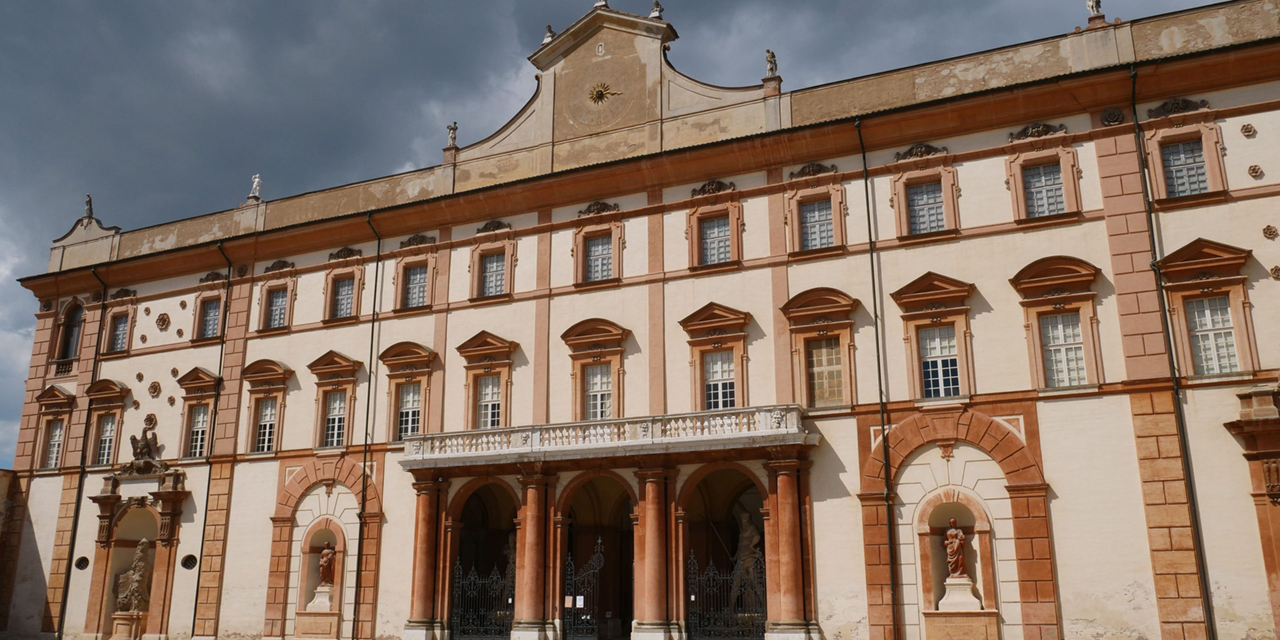
Stage
8
Wednesday 21
May 2025
76,4 km
Altitude gain 1700 mt
Technical Level: Advanced
Physical Effort: Medium

Sassuolo -
Castelnovo ne' Monti
Sassuolo - Castelnovo ne' Monti
tourist info
Host city:
Sassuolo
Overview
Sassuolo, located about 17 kilometers southwest from Modena, was probably built on a Roman settlement whose archaeological remains were found on the hills of Montegibbio. The town was governed by the Canossa family until the first decades of the 11th Century.Then, it became a free commune up to the 15th Century, when it was firstly conquered by the Della Rosa family and then by the Este family, who lost it to the Pios from Carpi for a short time and then regained it in 1599. Sassuolo has been for almost two centuries the summer residence of the House of Este and their government represented the peak of the economic, cultural and artistic growth for the town, as shown by the extraordinary Ducal Palace which, under Francesco I d’Este, went from being a military fortress to an elegant “Delight”. Today Sassuolo is famous for its leadership in the ceramic industry: in an area of only a few dozen kilometers, the city is home to numerous producers of Italian ceramic tiles, an internationally renowned product thanks to its beauty and high quality.
Gastronomy
Sassuolo’s very own typical products are Sassolino, a liqueur made by distilling star anise, invented in Sassuolo in the 19th Century, and the lesse renowned Sassolina, a mixture of pork meats stuffed into a casing made of pancetta or pork jowl, created by local butchers at the beginning of the 20th Century.
Needless to say, Sassuolo’s culinary offer inlcludes all of the internationally renowned PDO and PGI products from Emilia, and Modena in particular, such as Zampone, Parmigiano-Reggiano cheese, Nocino (a liqueur made from the husk of local walnuts), Lambrusco (a sparkling red wine) and Traditional Balsamic Vinegar of Modena.
A prime example of Emilia’s gastronomic culture is undoubtedly homemade fresh stuffed pasta: tortellini and tortelloni are typical Sunday dishes and they represent the most popular first course at Christmas and Easter family meals. Tortellino is a square of fresh pasta folded around a filling of pork, prosciutto, and Parmigiano Reggiano cheese. It can be served, as tradition dictates, in capon or hen broth, or in a Parmesan cheese cream. Tortelloni are bigger squares stuffed with ricotta cheese and spinach or pumpkin, served with melted butter and sage, or, as an alternative, with chopped pancetta (Italian spiced bacon) or mushroom sauce.
Fried gnocco and tigelle (also known as crescentine) are also typical Aemilian dishes that can serve as a second course or a main dish. Fried gnocco is a rectangular piece of dough fried in lard that accompanies charcuterie and cheese, while tigelle are dough discs cooked in a mold. A fun fact to know is that the term “tigella” originally referred to the small mold in which the dough discs – the crescentine – were cooked. Tigelle are typically filled with a variety of cold cuts, soft cheeses, stracchino cheese and arugula, or with ground pork lard seasoned with garlic and rosemary and a sprinkle of grated Parmesan-Reggiano. Both gnocco and tigelle are also excellent with jams or hazelnut spread to end the meal, or alternatively, one can choose a nice slice of Bensone – “al Busilàn,” in the local dialect – a shortcrust pastry dessert that will surely satisfy even the most refined palates.
Points of interest
Ducal Palace of Sassuolo
The Ducal Palace, also known as the “Delight of the Duke of Este”, is an incredibly fine example of baroque residence in northern Italy. Its current appearance dates back to 1634, when Duke Francesco I d’Este commissioned the best artists of the time, like Bartolomeo Avanzini and Gaspare Vigarani, to turn the ancient castle into a prestigious ducal residence. The palace was sumptuously decorated, both on the inside and on the outside, by renowned artists such as Jean Boulanger, Angelo Michele Colonna and Agostino Mitelli.
The Ducal Palace was also famous for its park and Italian gardens. The Ducal Park is nowadays the largest green public area of Sassuolo, but it is far smaller than it was in the 18th century, when it extended for more than 12 km. On the southern side of the Ducal Palace, instead, you can find the monumental Peschiera or “Fontanazzo”, designed by Bartolomeo Avanzini and Gaspare Vigarani, a unique brick structure covered in calcareous rock that was used as a fish tank and as an aquatic theatre, and the Cavallerizza Ducale, which hosted the stables and the lodgings of the “Dragoni Ducali” (i.e. “soldiers”) that followed the House of Este.
Today, the Ducal Palace hosts “Amid Court and Factory: the history of Sassuolo’s ceramics”, a free exhibition, promoted by Ceramiche Marca Corona and Gallerie Estensi, displaying over 250 unique ceramic pieces that represent the majolica production in Sassuolo from the 18th to the 20th Century.
The old town
Piazza Garibaldi, also known as “Small Square”, is the old town centre and it dates back to the 16th Century, commissioned by Alessandro Pio. In 1676, Francesco II d’Este commissioned the ducal architect Antonio Loraghi to build the Town Tower, that locals call “Campanone” (“Big Bell”). The current aspect of Piazza Garibaldi, with porticoes and two small canals, was realised by the ducal architect Pietro Bezzi in 1775.
In Piazza Martiri Partigiani, also called “Big Square”, stands the Cathedral of St. George, patron of Sassuolo. This ancient church, a rare example of Late Baroque style, dates back to the 14th century.
In Piazzale della Rosa, which owes its name to the city’s first noble family, is located the Church of St. Francis, designed by the architect Bartolomeo Avanzini, and built by Francesco d’Este in the 17th century. The church houses the Santo Tronco, the remains of Christ’s wooden crucifix, cherished by Sassuolo’s citizens and carried in procession every Maundy Thursday.
Montegibbio Castle and Municipal Balsamic Vinegar Production
The first fortifications of the Castle of Montegibbio, built on the hills surrounding Sassuolo to defend the lands of the Canossa family, date back to the 10th century; after many changes of ownership, in 1375 the castle became the Este dynasty’s property for the first time. Numerous handovers followed until 1851, when it became the summer residence of the noble Borsari family. The fortress is surrounded by the park of Montegibbio: a romantic English-style garden which extends for approximately 30 hectares. In 1972 the Castle of Montegibbio became property of the Municipality of Sassuolo, which established in its courtyard the Municipal Balsamic Vinegar production in 2003.
Secchia Nature Itinerary
Close to the Ducal Park, in Via dei Moli, it is possible to access the Secchia Nature Itinerary: a walking and cycling route alongside the Secchia River that offers the opportunity to enjoy outdoor activities, such as walking, running or cycling, while discovering the natural charm of the river environment.
Salvarola thermal baths
The ancient Salvarola thermal baths are located on the hills surrounding Sassuolo, at a distance of approximately 3 km from Sassuolo. Its healing waters, renowned since the Roman age, were even used by Matilde di Canossa and the Este family. Dating back to 1908, this Art Nouveau Spa offers a wide range of thermal health treatments thanks to its wellness and beauty centre.
Castelnovo ne' Monti
Overview
Nestled in the Apennines, Castelnovo ne’ Monti is an oasis of tranquility and natural beauty. It serves as the gateway to the Tosco-Emiliano National Park and is famous for the striking Pietra di Bismantova, a distinctive rock formation ideal for hiking and climbing. The town offers a perfect mix of nature, history, and Emilian culinary traditions.
Gastronomy
In the shops of Castelnovo’s center and in the dairy outlets, visitors can find many excellent local products. In addition to Parmigiano Reggiano, there is also local pecorino cheese, fresh porcini mushrooms in season and dried ones year-round, jams, cured meats, sweets, and the unmissable erbazzone, a savory pie made with chard and spinach.
The mountain version of erbazzone is a dish that unites tradition, history, and a unique flavor, making it beloved by both locals and visitors. It originated centuries ago as a humble peasant dish, using simple garden and wild herbs available in different seasons, enriched with pastry, lard, and aromatic seasonings.
Traditionally, it was baked in a round copper mold called “al sol” in the bread oven, and the entire Reggiano community competed to make the best one. The mountain variety stands out for the addition of rice, a practice dating back to when local women worked as “mondine” (rice field workers) in the plains, receiving sacks of rice as part of their wages, which they then incorporated into the classic erbazzone recipe.
Wine and beverage
In terms of viticulture, Castelnovo ne’ Monti mainly relies on surrounding areas known for their high-quality wines. Among the reds, Lambrusco reigns supreme, a sparkling ruby-red wine with a lively flavor, perfect for pairing with traditional Emilian dishes. The most appreciated varieties include Lambrusco Grasparossa, known for its full-bodied and tannic character, and Lambrusco Reggiano, which is lighter and fruitier.
Among the whites, Spergola is a rediscovered native grape variety from the Reggio Emilia area, producing fresh, slightly aromatic wines with pleasant acidity, ideal as an aperitif or paired with fish and local cheeses.
However, Castelnovo ne’ Monti is especially known for its artisanal liqueurs. Thanks to the abundance of wild fruits and aromatic plants thriving in the Apennines, the region offers a variety of unique-flavored spirits. Among the most traditional is Nocino, made from green walnuts harvested in June following an ancient tradition. The result is a dark, intense liqueur with a rich and enveloping taste, ideal as a digestif.
Another typical liqueur is Mirtillino, prepared with small wild blueberries from the local forests. Its sweet yet slightly tart flavor makes it a delightful after-dinner drink when served chilled. Other popular spirits include those made from juniper, wild sloes, and other local berries, crafted according to recipes passed down through generations.
Points of interest
A visit to Castelnovo ne’ Monti is not complete without a climb to the Pietra di Bismantova, a uniquely shaped sandstone formation resting on clay marl, famously mentioned by Dante Alighieri in the Divine Comedy (Purgatorio, Canto IV) and depicted in paintings by Correggio.
Other attractions include the ancient Pieve di Campiliola, the remains of the medieval Matildic tower on Monte Castello, which served as a fortress until the 1400s, and in the main village of Felina, the circular tower known as “Il Salame”, the last standing structure of a 12th-century castle.
A must-see in Castelnovo is also the local dairies, where mountain Parmigiano Reggiano, one of the world’s finest cheeses, is produced. The town is home to five dairies: Il Fornacione in Felina, Latteria Casale di Bismantova, Latteria Sociale Cagnola, the Carnola dairy, and Latteria Sociale di Garfagnolo.
Castelnovo also boasts a rich cultural and musical program, with the Cinema Teatro Bismantova at its core. In recent decades, the town has invested heavily in the “Castelnovo, Town for Sports” project, hosting annual competitions in various sports, from volleyball to mountain biking, and developing top-tier sports facilities. These include the CONI athletics center, multiple gyms, and the new Palasport, built in collaboration with the Federazione Sport Sordi Italia (Italian Deaf Sports Federation), which will be completed by 2025.
This project thrives on community engagement, collaboration with local sports associations, and integration with the Ospedale Sant’Anna, the main healthcare center for the southern province of Reggio Emilia.


